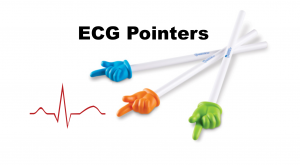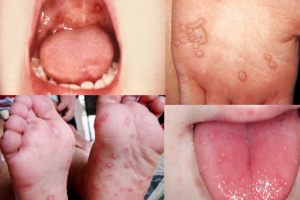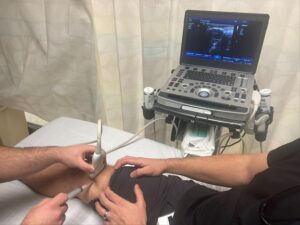Authors: Steven Wright, MD (EM Resident Physician, UTSW – Dallas, TX); Christopher Wright, MD (Attending Physician, Pediatric Emergency Medicine, University Hospitals Rainbow Babies & Children’s; Assistant Professor of Pediatrics, Case Western Reserve University) // Reviewed by: Sophia Görgens, MD (EM Physician, BIDMC, MA); Cassandra Mackey, MD (Assistant Professor of Emergency Medicine, UMass Chan Medical School); Alex Koyfman, MD (@EMHighAK); Brit Long, MD (@long_brit)
Welcome to EM@3AM, an emDOCs series designed to foster your working knowledge by providing an expedited review of clinical basics. We’ll keep it short, while you keep that EM brain sharp.
Answer: Pediatric Aural Foreign Body
Background:
- Foreign bodies are a common presenting complaint in pediatric emergency departments.
- Typically begin after development of the pincer grip (9 months).1
- ADHD is considered an important risk factor for auricular foreign bodies due to increased impulsivity and inatentiveness.2
Epidemiology:
- Foreign bodies account for approximately 11% of all pediatric ENT emergencies.2
- 38% of all pediatric foreign bodies will be aural.2
- 22% of patients with a foreign body of the ear, nose, or throat will have a subsequent episode.2
- Beads are the most common aural foreign body (21.2%).1
- Typically presents in ages 9 months – 8 years.1-3
- More common in boys (1.48 to 1 ratio).1
Clinical Presentation:
- Clinical manifestation can vary widely based on the characteristic of the foreign body and the timing since insertion.
- Symptoms can include otalgia, hearing loss, bleeding, dizziness/vertiginous symptoms.2
- Animate foreign bodies like insects may cause excoriations of the auditory canal.4
- Organic materials are more likely to cause local tissue reactions.4
- Much like esophageal and nasal presentations, button batteries require emergent removal due to risk of corrosion and liquefactive necrosis.4-6
Evaluation/Diagnosis:
- Diagnosis typically made by direct visualization of foreign body.
- Important to evaluate both ears as well as nares as it is not uncommon to have foreign bodies in multiple orifices.
- Must attempt to rule out tympanic membrane (TM) rupture prior to attempted removals.6,7

- Evaluate position of foreign body and condition of auditory canal.
- Assess for risk factors which make successful removal less likely.
- Age < 5, non-graspable foreign object, comorbid behavioral disorders.8
- Inquire about previous episodes of foreign bodies.
- Although uncommon, repeated foreign bodies may be a manifestation of Factitious Disorder Imposed on Another.6
Management:
- Success rate of removal by ED providers varies heavily in the literature (ranging from 7-85%).1,8,9
- Factors that decrease rate of successful removal include round object, previous removal attempts, present for greater than 24 hours, touching the TM.9,10
- Organic objects (such as peas or beans) are more urgent for removal than inorganic objects (like beads).4,5
- More likely to cause local inflammatory reaction leading to tissue/canal swelling.4,5
- Should not be irrigated due to risk of expansion.6
- Animate Objects (insects)
- First step is asphyxiation with mineral oil or viscous lidocaine.4-6
- Successful complete removal in only 65% of cases.9
- After removal, important to re-examine for retained pieces as insects frequently removed in piecemeal fashion.
- May require gentle irrigation for removal of small components like legs/wings.
- Disk batteries
- Should not be irrigated as this can increase corrosive effect.4,6,7
- Similarly, attempted removal that causes bleeding may increase corrosive effect.6
- Early consultation to ENT if difficulty with removal is encountered.
- Sharp objects should prompt ENT consultation and/or referral.6,10
- Tightly packed objects near the TM should be referred to ENT in the outpatient setting for removal via otomicroscopy.6
- After removal, re-examine the ear for canal irritation/lacerations, retained foreign bodies, TM ruptures, underlying otitis media.
- As many as 5.3% of patient will have an underlying otitis media.10
- Removal Techniques
- Most common ED approach is direct visualization with otoscope and removal with alligator forceps.10
- Hooks, curettes, or loops may be used in objects that are not graspable by forceps.
- Increased risk of perforation due to need to pass these beyond the visualized foreign body.7
- Otomicroscope increases rate of successful removal over direct visualization in one retrospective study (83% vs 64%).
- Irrigation
- Contraindicated with TM rupture.
- Should be completed with body temperature water aiming at the superior portion of the canal.7
- Body temperature water decreases the risk of inner ear stimulation inducing vertigo, nystagmus, and nausea.7
- If no dedicated equipment can use a 20cc syringe attached to 14-16 gauge angiocath or butterfly tip with needle removed.6,7

- Suction can be utilized but may be difficult due to loud noise limiting patient cooperation.7
- Balloon tipped catheters may be utilized though carry risk of perforation of TM.
- Glue tipped cotton tipped applicators may be used if object is visualized and dry.7
- Higher rate of complication and damage to the canal.1
- Otic antibiotics should only be given if auditory canal is inflamed, lacerated/excoriated, or TM rupture is present.6
- May also consider prophylactic if the patient has high risk features such as immunodeficiency, diabetes, etc.
- Coverage for otitis externa, including pseudomonas coverage.

- Consider procedural sedation to aid in removal if needed.
Complications:
- Minor complications include: excoriations, bruising, minor lacerations/bleeding from the external auditory canal.1,8
- Major complications include TM rupture, ossicle damage.1,8
- Most common complication is canal excoriation/lacerations (47%).
- Rate of TM rupture 4.2%.10
- Rate of complication from attempted removal in the ED is approximately 6-20%.8,10
- Majority of these will be minor complications.
- Factors that increase risk of complication include previous removal attempt (47% vs 20% in one study), increased duration of foreign body presence, proximity to TM.1,9,10
Pearls:
- Disc batteries should never be irrigated due to the risk of increasing corrosive effects.
- Antibiotics should only be initiated if signs of inflammation/lacerations are present after removal.
- Live insects should be asphyxiated with mineral oil or viscous lidocaine prior to removal.
- Organic objects such as peas or beans should not be irrigated due to risk of expansion.

A parent brings her healthy 2-year-old girl to the ED with a concern of ear pain. On physical exam, you visualize a live insect in the left external auditory canal. What is the best way to care for this child?
A) Irrigation of the ear with alcohol or mineral oil to kill the insect; forceps removal; ototopical antibiotics only if there is excoriation of the external auditory canal
B) Irrigation of the ear with tap water to kill the insect; irrigation removal; ototopical antiobiotics to prevent otitis externa
C) Removal of the insect with curette; ototopical antibiotics only if there is excoriation of the external auditory canal
D) Removal of the insect with forceps; ototopical antibiotics for prevention of otitis externa
Correct answer: A
The most common foreign body (FB) concern in the ED is the foreign body in the external auditory canal (EAC). These FBs cause relatively little pain and can go for quite some time without being noted. Stones, paper, beads, food, and insects are some of the most common substances that are found in patients’ ears. When discovered, the FB should be removed, but this requires either cooperation, physical restraint, or chemical restraint of the patient. Most objects do not cause direct injury to the EAC, so if they are not removed in the ED, patients can be referred to the otolaryngologist for elective evacuation. FBs may be removed using a curette, alligator forceps, or irrigation with an IV catheter and a 20 cc syringe. Irrigation is contraindicated if there is suspicion that the tympanic membrane may have been violated. Irrigation is also contraindicated if the FB is organic material such as food. Live insects should be killed first with alcohol or mineral oil, followed by any type of removal. Prophylactic ototopical antibiotics for otitis externa are required if there has been an excoriation of the EAC during the FB removal.

Irrigation of the ear with tap water (B) is contraindicated for soft objects, organic matter, or seeds, since it may lead to swelling of the object. Ototopic antibiotic prophylaxis is only indicated if the EAC has been excoriated during the removal of the FB.
Removal of the insect with curette (C) or forceps (D) and without killing it first can cause severe pain and alarming symptoms to the patient secondary to insect movement on the exquisitely sensitive tympanic membrane and medial EAC.
References:
- Shih M, Brock L, Liu YC. Pediatric Aural Foreign Body Extraction: Comparison of Efficacies Among Clinical Settings and Retrieval Methods. Otolaryngol Head Neck Surg. 2021 Mar;164(3):662-666. doi: 10.1177/0194599820953130. Epub 2020 Sep 8. PMID: 32894992.
- Mukherjee A, Haldar D, Dutta S, Dutta M, Saha J, Sinha R. Ear, nose and throat foreign bodies in children: a search for socio-demographic correlates. Int J Pediatr Otorhinolaryngol. 2011 Apr;75(4):510-2. doi: 10.1016/j.ijporl.2011.01.006. Epub 2011 Feb 3. PMID: 21295355.
- Xiao CC, Kshirsagar RS, Rivero A. Pediatric foreign bodies of the ear: A 10-year national analysis. Int J Pediatr Otorhinolaryngol. 2020 Nov;138:110354. doi: 10.1016/j.ijporl.2020.110354. Epub 2020 Sep 1. PMID: 33152957.
- Prasad N, Harley E. The aural foreign body space: A review of pediatric ear foreign bodies and a management paradigm. Int J Pediatr Otorhinolaryngol. 2020 May;132:109871. doi: 10.1016/j.ijporl.2020.109871. Epub 2020 Jan 11. PMID: 32050118.
- De M, Anari S. Infections and foreign bodies in ENT. Surgery (Oxf). 2018 Oct;36(10):553-559. doi: 10.1016/j.mpsur.2018.08.008. Epub 2018 Sep 29. PMID: 32336859; PMCID: PMC7172438.
- Ansley JF, Cunningham MJ. Treatment of aural foreign bodies in children. Pediatrics. 1998 Apr;101(4 Pt 1):638-41. doi: 10.1542/peds.101.4.638. PMID: 9521948.
- Davies PH, Benger JR. Foreign bodies in the nose and ear: a review of techniques for removal in the emergency department. J Accid Emerg Med. 2000 Mar;17(2):91-4. doi: 10.1136/emj.17.2.91. PMID: 10718227; PMCID: PMC1725343.
- Mingo K, Eleff D, Anne S, Osborne K. Pediatric ear foreign body retrieval: A comparison across specialties. Am J Otolaryngol. 2020 Mar-Apr;41(2):102167. doi: 10.1016/j.amjoto.2019.01.010. Epub 2019 Feb 15. PMID: 31405529
- Marin JR, Trainor JL. Foreign body removal from the external auditory canal in a pediatric emergency department. Pediatr Emerg Care. 2006 Sep;22(9):630-4. doi: 10.1097/01.pec.0000227866.46439.3f. PMID: 16983246.
- Schulze SL, Kerschner J, Beste D. Pediatric external auditory canal foreign bodies: a review of 698 cases. Otolaryngol Head Neck Surg. 2002 Jul;127(1):73-8. doi: 10.1067/mhn.2002.126724. PMID: 12161734.








